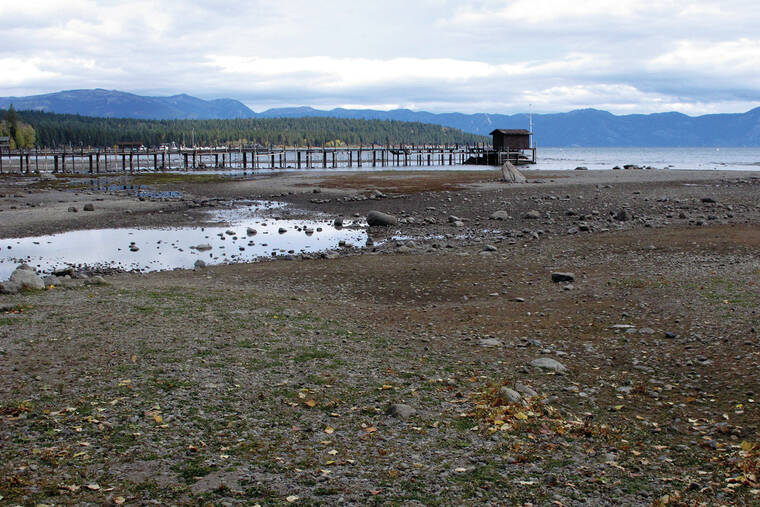Hot spring forecast: Drought deepens in West, flooding ebbs
There’s no relief in sight for the West’s record-shattering megadrought, which will likely only deepen this spring, the National Oceanic and Atmospheric Administration said in its seasonal outlook Thursday. But central and eastern states should be mostly spared from significant flooding.
Spring is likely to be hotter than normal in most states and drier as well for much of the West, NOAA meteorologists said. They said the high heat and drought will fuel each other as the lack of rain makes it hotter, intensifying dry conditions.
ADVERTISING
NOAA predicts all of the Lower 48 states to be warmer than normal in April, May and June except Washington, Oregon, Montana, North Dakota and much of Idaho. Only an area around the Great Lakes down to Kentucky is forecast to be wetter than normal. Worsening allergies are expected in the areas that will be hot and wet.
“Drought has increased, especially in the West as it has warmed,” said Deke Arndt, NOAA’s climate science and services chief. “The reason the West is warming is climate change, especially over the multiple decade timeframe.”
Already, 60% of the nation is in some form of drought, the largest drought coverage since 2013, said Jon Gottschalck, operational prediction chief at NOAA’s Climate Prediction Center. He said the conditions are likely to get worse in many of those areas and could set the stage for more heat waves.
La Nina, a natural periodic cooling of the central Pacific that affects climate worldwide, is a huge factor in the spring outlook, Gottschalck said.
In California, especially the Central Valley, three-year rain and snow levels will soon reach the lowest on record since 1922, said Brett Whitin, a hydrologist at NOAA’s California Nevada River Forecast Center. California has 1.5 million acre feet less water available than it did this time last year, and he said the only hope is for heavy December snow to make up for some of the shortfall.
“It does make for some very difficult (crop) producer decisions as what to continue to grow and what to keep alive,” said Brad Rippey, a U.S. Department of Agriculture meteorologist, in a press briefing.
The more than 20-year megadrought gripping the West is the worst in 1,200 years and is stoked by human-caused climate change from the burning of coal, oil and natural gas, studies have found. Worsening drought also sets the stage for more dangerous wildfires in summer, said Brad Pugh, a drought meteorologist with the NOAA’s Climate Prediction Center.
In the central part of the country, spring often brings flooding worries. But this year, the flooding risk is minor for much of the Mississippi River valley and Tennessee Valley.


